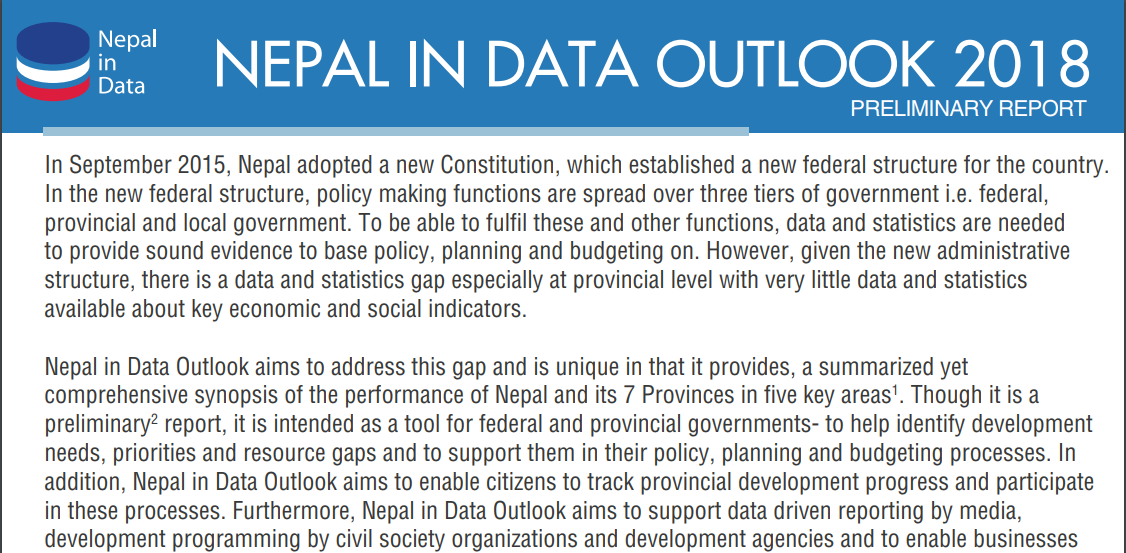Nepal in Data launches Nepal in Data Outlook
In September 2015, Nepal adopted a new Constitution, which established a new federal structure for the country. In the new federal structure, policy making functions are spread over three tiers of government i.e. federal, provincial and local government. To be able to fulfil these and other functions, data and statistics are needed to provide sound evidence to base policy, planning and budgeting on. However, given the new administrative structure, there is a data and statistics gap especially at provincial level with very little data and statistics available about key economic and social indicators.
Nepal in Data Outlook aims to address this gap and is unique in that it provides, a summarized yet comprehensive synopsis of the performance of Nepal and its 7 Provinces in five key areas1. Though it is a preliminary report, it is intended as a tool for federal and provincial governments- to help identify development needs, priorities and resource gaps and to support them in their policy, planning and budgeting processes. In addition, Nepal in Data Outlook aims to enable citizens to track provincial development progress and participate in these processes. Furthermore, Nepal in Data Outlook aims to support data driven reporting by media, development programming by civil society organizations and development agencies and to enable businesses to make sound investment decisions.
Nepal in Data Outlook is based on times series data, sourced from various government publications from 2011 to 2017. All years mentioned in this report denote the year in which the Nepali fiscal year ended (16 July to 15 July). Expert analysts/statisticians determined the weights and computations based on CBS standard practices. 2011 is the base year for all basic prices and quantities.
Visit: https://nepalindata.com/resource/1993/

